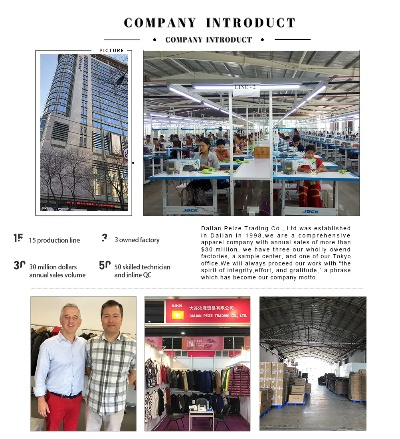Navigating the Path to Sustainable Textile Recycling:A Comprehensive Guide
This comprehensive guide provides a roadmap for sustainable textile recycling, offering insights into the challenges and opportunities of this sector. It emphasizes the importance of reducing textile waste by promoting the use of eco-friendly materials and implementing effective recycling processes. The guide also highlights the benefits of recycling textiles, such as reducing landfill space and conserving natural resources. It suggests strategies for increasing textile recycling rates, including collaboration between manufacturers, retailers, and consumers. Additionally, it explores innovative solutions to address the challenges of textile recycling, such as developing new technologies and improving infrastructure. Overall, this guide aims to empower individuals and organizations to take action towards a more sustainable future.
Introduction: In the realm of sustainable development, textile waste management is a critical challenge that demands innovative solutions. The textile industry produces an estimated 20 million tons of textile waste annually worldwide, which poses significant environmental and economic implications. However, by adopting a proactive approach to recycling, we can mitigate these issues and foster a circular economy. This guide aims to provide insights into the various strategies for effective textile recycling, including the benefits, challenges, and best practices.
Benefits of Textile Recycling: Textile recycling offers numerous advantages, from reducing landfill waste to conserving natural resources and minimizing greenhouse gas emissions. By converting textile waste into new products, we not only reduce our dependence on raw materials but also contribute to a more sustainable future. Here are some key benefits:
-
Environmental Conservation: Textile waste, especially when improperly disposed of, can lead to soil contamination, water pollution, and harm to wildlife. By recycling textiles, we minimize these negative impacts and protect our ecosystem.

-
Economic Benefits: Textile recycling generates jobs in the textile industry, as well as in the recycling and reprocessing sectors. This creates a valuable economic engine that supports local communities and stimulates economic growth.
-
Energy Efficiency: The energy required for textile recycling processes can be significantly reduced compared to traditional manufacturing methods. This not only saves energy but also contributes to carbon neutrality goals.
-
Reduced Waste: Textile recycling reduces the volume of waste sent to landfills, thereby alleviating pressure on these facilities and promoting resource conservation.
-
Cost-Effective: In many cases, textile recycling is more cost-effective than producing new products from raw materials. This is because recycled materials often have lower production costs and higher quality standards.
Challenges in Textile Recycling: Despite its numerous benefits, textile recycling faces several challenges that must be addressed for it to become a viable and widespread practice. These include:
-
High Initial Costs: Initial investment in equipment and infrastructure for textile recycling can be prohibitively expensive for many small and medium-sized enterprises (SMEs).
-
Lack of Standardization: There is a lack of standardized guidelines and processes for textile recycling, making it difficult for businesses to implement effective recycling programs.
-
Limited Availability of Recycled Materials: Many textile scraps are not suitable for reprocessing or cannot be converted into high-quality recycled materials.
-
Public Awareness: There is a need for increased public awareness and education about the benefits of textile recycling and the importance of supporting this industry.
Best Practices for Textile Recycling: To overcome these challenges and maximize the potential of textile recycling, businesses and policymakers should follow best practices. Here are some essential steps:
-
Invest in Technology: Adopting advanced technologies such as automated sorting machines, recycling presses, and thermomechanical recycling processes can significantly improve the efficiency and quality of textile recycling operations.
-
Collaborate with Recyclers: Partnering with reputable textile recycling companies can help businesses access reliable materials and streamline their recycling process.
-
Standardize Processes: Ensuring consistency across different textile scraps through standardized processing protocols can improve the quality of recycled materials and increase their marketability.
-
Build Brands: Emphasizing the sustainability credentials of textile recycling can attract consumers who value eco-friendly products. This can be achieved through certifications, advertising, and partnerships with eco-conscious brands.
-
Promote Education: Educating customers and stakeholders about the benefits of textile recycling can encourage more participation in the recycling process.
-
Foster Local Economies: Supporting local textile recycling initiatives can create job opportunities and promote economic growth in rural areas where recycling facilities may not be available.
-
Address Legal and Regulatory Challenges: Ensuring compliance with relevant laws and regulations can mitigate legal risks and ensure that textile recycling activities are conducted ethically and sustainably.
Conclusion: Textile recycling holds immense promise for the future of the global textile industry. By addressing the challenges and implementing best practices, we can transform textile waste into a valuable resource that supports sustainable development. As we continue to explore the possibilities of textile recycling, let us embrace the opportunity to create a more circular economy that benefits both people and the planet.
随着社会经济的快速发展,废旧纺织品回收处理已成为环境保护和资源循环利用的重要议题,国家为了推动这一进程,实施了一系列相关政策和措施,本文将围绕国家纺织品回收的主题,从政策背景、现状分析、案例介绍等方面进行阐述。
政策背景
近年来,随着国家对环境保护和可持续发展的重视,废旧纺织品回收处理成为一项重要的政策任务,国家出台了一系列相关政策,旨在推动废旧纺织品回收利用,促进循环经济和绿色发展,这些政策包括但不限于废旧纺织品回收标准制定、回收渠道建设、回收处理设施建设等。
现状分析
我国废旧纺织品回收处理面临以下现状:
- 回收量逐年增加:随着公众环保意识的提高和政府政策的推动,废旧纺织品回收量逐年增加。
- 回收处理技术不断进步:随着科技的发展,废旧纺织品回收处理技术不断进步,包括再生纤维生产、资源化利用等。
- 回收处理设施不断完善:各地政府积极推进废旧纺织品回收处理设施建设,提高回收处理效率。
案例说明
以某地区为例,介绍废旧纺织品回收处理的成功案例:
- 政策执行情况:该地区政府积极响应国家政策,制定并实施了一系列废旧纺织品回收政策,建立了完善的回收处理体系,包括设立专门的回收站点、建立回收处理企业等。
- 回收处理过程:该地区废旧纺织品主要来源于居民家庭、企事业单位等,在回收过程中,采用先进的检测技术和分类方法,确保废旧纺织品得到科学、规范的处理,加强与再生纤维生产企业的合作,实现废旧纺织品资源的最大化利用。
- 成效与影响:经过多年的努力,该地区废旧纺织品回收处理取得了显著成效,不仅提高了废旧纺织品资源的利用率,还促进了循环经济的发展,为当地创造了良好的经济和社会效益,也为其他地区提供了可借鉴的经验和做法。
展望未来,我国废旧纺织品回收处理将面临以下发展趋势:
- 政策支持力度将持续加大:随着环保意识的不断提高和政府政策的持续推动,废旧纺织品回收处理将得到更加有力的政策支持。
- 回收处理技术将不断创新:随着科技的发展,废旧纺织品回收处理技术将不断创新,包括资源化利用、再生纤维生产等。
- 循环经济将成为主流:随着循环经济的不断发展,废旧纺织品回收处理将成为推动循环经济的重要手段,各地政府和企业将更加注重废旧纺织品资源的循环利用和再利用,促进绿色发展。
国家纺织品回收是一项重要的环保和资源循环利用工作,通过实施相关政策和措施,我国废旧纺织品回收处理取得了显著成效,随着环保意识的不断提高和科技的不断进步,我国废旧纺织品回收处理将面临更加广阔的发展前景,我们应该积极响应国家政策,加强废旧纺织品回收处理工作,促进循环经济和绿色发展。
Articles related to the knowledge points of this article:
The Science Behind Colorful Textile Dyes
The Similarity and Differences Between Textiles and Yarn
Navigating the World of Textile Dyes and Fixatives for Success
The Dynamics of Sustainable Fashion:An Exploration into Lichuang Textile



